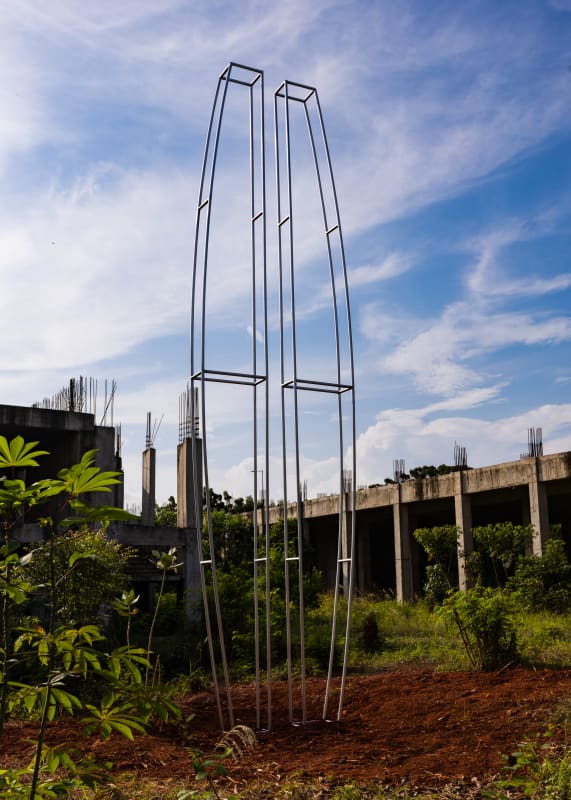Gallery 1957 in partnership with Limbo Museum is proud to present On the Other Side of Languish, a solo exhibition by Reginald Sylvester II opening in Accra on 30th October, 2025 during Accra Cultural Week.
Born in Jacksonville, North Carolina, and based in New York, artist Reginald Sylvester II (b.1987) works across painting and sculpture to trace the generative threshold between the two mediums. Working predominantly in abstraction, his practice investigates the industrial histories of materials such as rubber, tarp, aluminum, and steel. On the Other Side of Languish – his first solo exhibition in Africa – brings together nineteen sculptures and seven paintings created during his residency program with the Limbo Museum, mapping six weeks spent in Accra.
On the Other side of Languish employs tactics of Minimalism as a passageway into the spiritual. Each sculpture takes the shape of a three-dimensional crescent which Sylvester regards as “half-gates” and similarly shaped cuts appear throughout the paintings. When two of the sculptures face each other that configures a “full-gate.” Here, form acts as a prism, a vortex, and a portal. Through the application of these half crescent frames Sylvester folds absence over and through itself inviting the viewer's perspective and surrounding environment of the Limbo Museum to hold the labor of meaning making. As you move through the exhibition, the orientation and size of this shape shift into varied positions. At times the shape stands erect at 24 feet, lies horizontal, hangs suspended from the ceiling, or is carved into a painting. Sylvester constantly rotates the viewer’s gaze, expanding scale and perception to ascribe different information onto the body.
Sylvester’s experiments in form carry historical references of movement, continuity, and passage into the beyond. The conceptual deployment of the sculptures as “gates” serves as a reference to the diagram of slave ships that transported bodies across the Atlantic and further a pathway for the souls that were lost to pass through pulling from biblical text Revelations 21:12.
Also integral to this exhibition is the site itself and the contextual geography that defines where it takes place. Research into the colonial rubber plantations in the Western region of Ghana grounds his use of EPDM rubber in all of the paintings. These are coated in pigments that allude to the soil’s memory and lingering histories of extraction. Working closely with local artisans, each sculpture is crafted from steel and functions as urban triggers of signage structures and agricultural technologies in Accra.
On the Other side of Languish is a direct environmental response to the Limbo Museum and its temporary residence in an unfinished structure on the University of Ghana’s campus. Sylvester’s exhibition returns to and advances our ongoing investigation of the void and meditates on the Museum’s ethos of “ruin as practice.”

